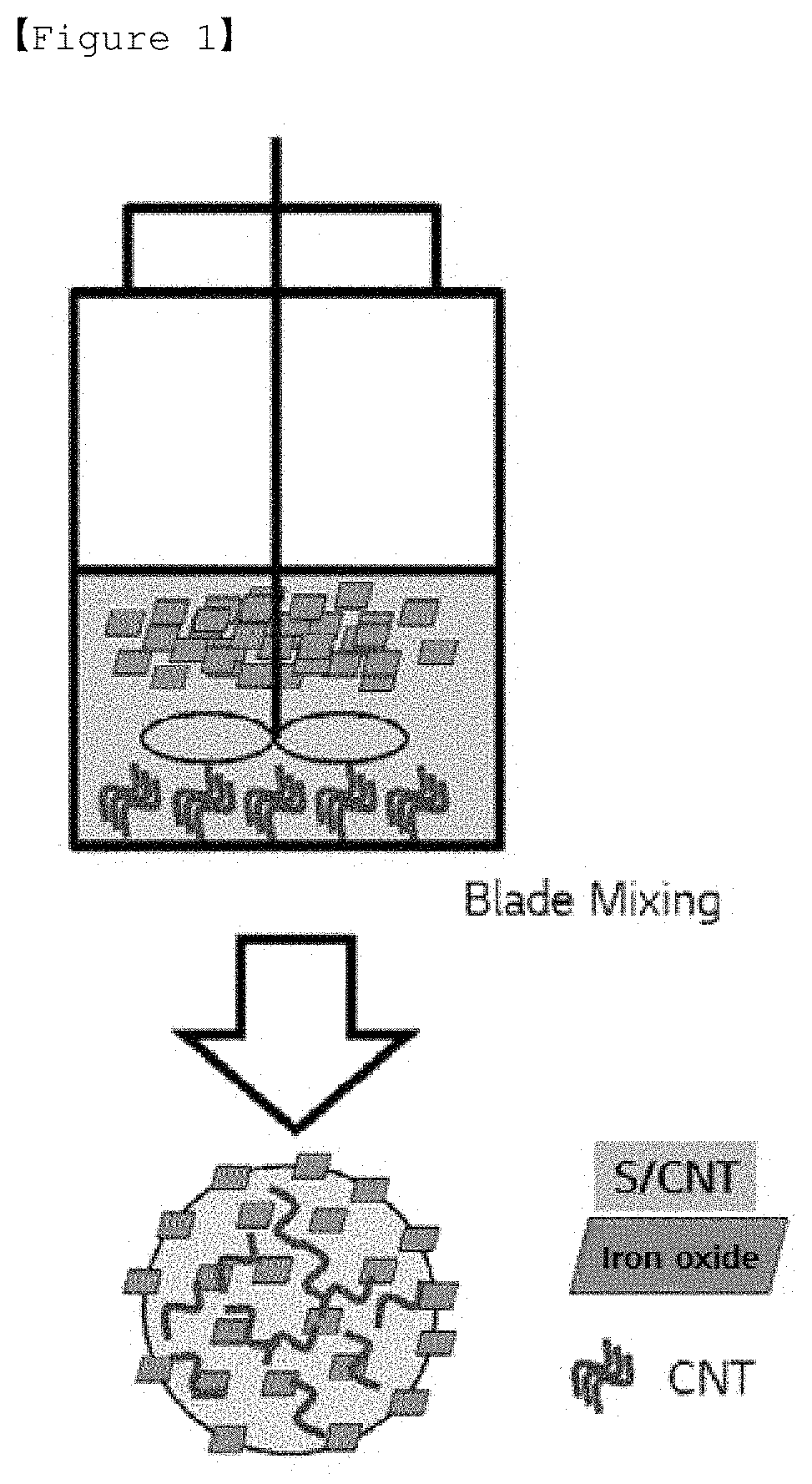Cathode active material for lithium secondary battery
- Summary
- Abstract
- Description
- Claims
- Application Information
AI Technical Summary
Benefits of technology
Problems solved by technology
Method used
Image
Examples
example 1
Manufacturing of Lithium-Sulfur Battery
[0121]88 parts by weight of the positive electrode active material prepared in the above Preparation Example, 5 parts by weight of VGCF (Vapor Grown Carbon Fiber) as an electrically conductive material, and 7 parts by weight of lithiated polyacrylamide (LiPAA) / polyvinylalcohol (PVA) (LiPAA / PVA: 6.5:0.5) as a binder were added to de-ionized water (DIW) as a solvent, and mixed to prepare a slurry composition for positive electrode active material.
[0122]Subsequently, the prepared slurry composition was coated on a current collector (Al Foil, 20 μm) and dried at 50° C. for 12 hours to prepare a positive electrode for a lithium-sulfur battery. At this time, the loading amount was 3.5 mAh / cm2, and the porosity of the electrode was 60%.
[0123]Thereafter, a coin cell of a lithium-sulfur battery comprising the positive electrode manufactured according to the above, lithium metal as a negative electrode, a separator and an electrolyte. A mixed solution co...
experimental example 1
Scanning Electron Microscope (SEM) Analysis
[0126]The positive electrode active materials according to Preparation Example and Comparative Preparation Examples 1 to 2 were each subjected to SEM analysis (S-4800 FE-SEM from Hitachi company) at a magnification of 20 k.
[0127]FIGS. 2 to 3 are SEM images of the positive electrode active materials according to Comparative Preparation Examples 1 and 2, respectively, and FIG. 4 is a SEM image of the Preparation Example.
[0128]In the case of FIG. 2 according to Comparative Preparation Example 1 of the present invention, it was confirmed that the coating layer is not formed on the positive electrode active material, and thus the surface of the sulfur-carbon composite is exposed.
[0129]In the case of FIG. 3 according to Comparative Preparation Example 2 of the present invention, it was confirmed that although the surface of the sulfur-carbon composite was not exposed due to the coating layer of carbon nanotubes, iron oxyhydroxynitrate according t...
experimental example 2
X-Ray Diffraction (XRD) Analysis
[0131]The iron oxyhydroxynitrate prepared in Preparation Example was subjected to XRD analysis (D4 Endeavor from Bruker company).
[0132]FIG. 5 is a graph showing the XRD analysis of the iron oxyhydroxynitrate prepared in Preparatory Example.
[0133]Referring to FIG. 5, the XRD peaks of the (310) and (520) planes were 2θ=35.2±0.2° and 61.3±0.2°, respectively, and thus it was confirmed that iron oxyhydroxynitrate of the pure phase according to the present invention was prepared.
PUM
 Login to View More
Login to View More Abstract
Description
Claims
Application Information
 Login to View More
Login to View More - R&D
- Intellectual Property
- Life Sciences
- Materials
- Tech Scout
- Unparalleled Data Quality
- Higher Quality Content
- 60% Fewer Hallucinations
Browse by: Latest US Patents, China's latest patents, Technical Efficacy Thesaurus, Application Domain, Technology Topic, Popular Technical Reports.
© 2025 PatSnap. All rights reserved.Legal|Privacy policy|Modern Slavery Act Transparency Statement|Sitemap|About US| Contact US: help@patsnap.com



